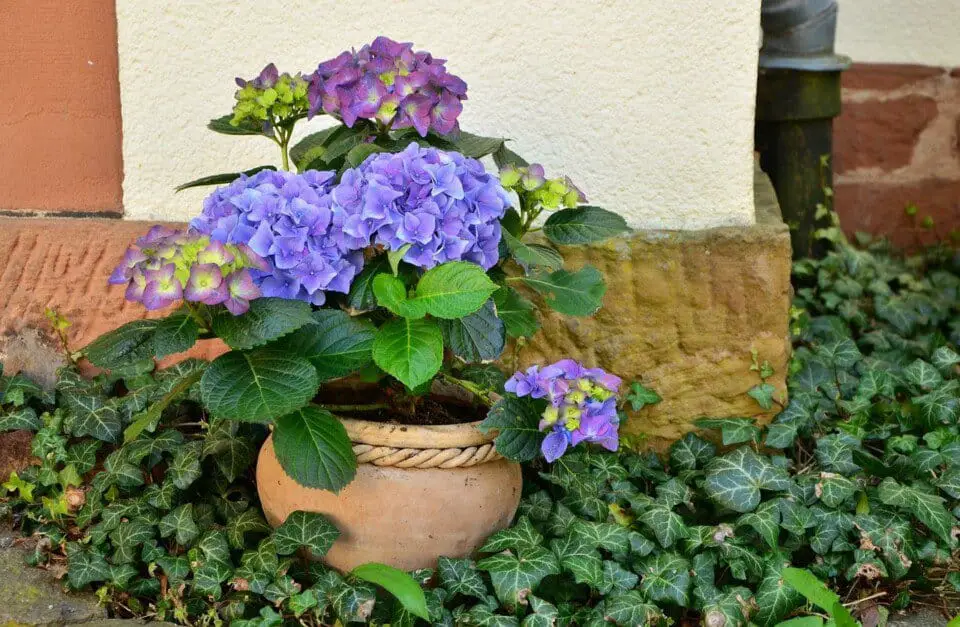Some links in the post are affiliate links and I get a commission from purchases made through some links found in the post.
Hydrangeas are beautiful additions to any garden and house. In the summer, they put on a magnificent floral display, and in the winter, they typically wither away.
Those amazing plants are low-maintenance and require very little care. However, one exception is that they need the correct pruning in order to thrive.
Different hydrangea varieties require different techniques to prune. Pruning directs the plants’ energy toward robust growth and big flowers.
Inadequate pruning will have an impact on flowering. Typically, hydrangeas blossoms should be removed immediately after flowering. Depending on various factors, stems can either be removed on the ground level, or on a specific height.
We must learn how to trim hydrangeas properly to get the most out of them, maximize blooms, and make sure they will survive the winter.
Although growing hydrangeas is quite straightforward if they are not properly pruned and deadheading, they can eventually disappoint you.
Fortunately, learning how to prune hydrangea is easy. In this article, we will teach you everything you need to know about how to prune hydrangea.
Should you Prune a Hydrangea
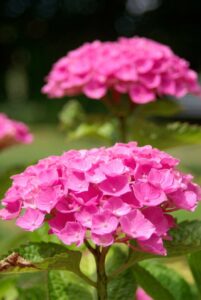 First off, you should be aware that hydrangeas don’t require pruning unless the bush has become unruly or too big for its place and requires some shaping up.
First off, you should be aware that hydrangeas don’t require pruning unless the bush has become unruly or too big for its place and requires some shaping up.
Otherwise, you will only have to remove the deadhead wasted flowers and cut any dead branches from the plant.
Many factors are depended on the hydrangea type. All hydrangeas fall into two main categories and those are old wood and new wood hydrangeas.
The fastest method to check if your hydrangea is old wood or new wood blooming is to look for your variety’s name on the tag.
However, if you’ve lost the tag or it’s become completely unreadable, there are a few other indicators that might tell you if your hydrangea grows on new or old wood.
Old Wood and New Wood Hydrangeas
If you trimmed the hydrangea in the spring and it did not bloom that summer Your hydrangea probably blooms on old wood, and spring trimming would have eliminated the buds.
Your hydrangea blooms on new wood if you cut it severely in the spring and it still blooms that year.
When your plant is flowering, inspect it, you ought to be able to tell the difference between old and new wood.
New wood will be considerably more flexible, and supple, with a green tint to it. But old wood should be stiffer, harder, thicker, and more grey or brown in color.
If you do decide to prune your hydrangea, keep this in mind, the pruning technique and time are dependent on the variety of hydrangea and their blooming time.
If you wait too long, you can chop off the buds that are developing on old wood ( which are stems from the year before the current summer), which would prevent flowers from blooming the next spring.
Therefore, as soon as the flowers on these bushes have faded, they should be clipped.
When Should you Prune a Hydrangea?
Late Winter Pruning
Some hydrangeas should be clipped at the end of the winter or early spring before the shrub starts to develop actively since they bloom on new growth.
These include a number of increasingly well-liked species including Burgundy Lace as well as traditional “snowball” variants like Annabelle.
The traditional PG or PeeGee, which blooms in late summer with creamy white flowers that mature to rosy pink, is another plant that may be clipped in late winter.
Late Summer Pruning
Once the hydrangeas have completed flowering in the summer, the majority of them should be clipped. these particular ones belong to the old wood hydrangeas group.
You will put the plant in danger of removing the latent flower buds if you trim them in the early spring.
By cutting as soon as the flowers have finished fading, you give the plant time to form buds for the next year. Therefore, those ones are preferred to be pruned in the late summer or at the beginning of fall.
Nikko Blue and all other pink- and blue-flowering varieties of oakleaf and bigleaf hydrangea bloom from buds planted the previous year. To preserve their size or shape, prune hydrangea in the summer.
Blushing Bride and Endless Summer are examples of so-called “ever-blooming” hydrangeas that ought to be handled similarly. The distinctive feature of these bigleaf hydrangeas is that they bloom on both old and new wood.
In late summer or early fall, when the days become shorter and the temperature drops, these shrubs begin to create the bloom buds for the next year.
Pruning should be done just as the blooms start to fade to limit the chance of eliminating these buds. The sooner the shrub recovers after blooming, the more and bigger flowers it will produce the next season.
How Far Back Should you Prune Hydrangeas?
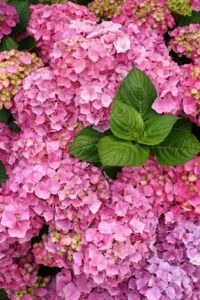 It is recommended to cut the branches back measuring the size of one-half to one-third. Make sure that you are cutting the hydrangeas right above the node.
It is recommended to cut the branches back measuring the size of one-half to one-third. Make sure that you are cutting the hydrangeas right above the node.
Minimal trimming encourages huge, strong bushes with many tiny flower heads in Arborescent hydrangea.
Hard pruning between 12 and 18 inches from the ground, or even all the way down, will result in fewer but bigger flower heads that may need additional support because of their large size and weight.
Tbranches of some hydrangeas sometimes may fall over because of the heavy weight of their flowers. Cutting the stem between 18 to 24 inches will help to reduce this flopping by creating a strong framework for fresh growth.
How to Prune a Hydrangea
Simply a decent bypass pruner is all you need to prune hydrangeas. Because the blades of bypass pruners overlap, a clean cut is made that is significantly healthier for living plants.
You can use anvil-style pruners on the stems that are dead since they can break and harm branches.
Old Wood Blooming Hydrangea Pruning
Examples of old wood blooming hydrangeas are Mophead, Bigleaf (Also known as macrophylla) Oakleaf, and Lacecap. These gorgeous bushes require very little trimming.
If you must, though, understanding when and where to trim is crucial. Generally, if you cut a large amount of old wood hydrangea stems, then you will get free blooms next summer, but the blooms will be larger in size.
Remember to prune hydrangea no later than July. Mainly this is the time when the blooms have faded. Remove weak or broken stems during the winter or early spring pruning.
The oldest stalks should only be removed in thirds, cutting them to the ground. To maintain the shape of your shrubs and revitalize them, repeat the method each summer.
You can remove any wayward or messy rods at the soil level and prune the hydrangeas wasted flowers just below the flower head to keep their plants looking clean.
A hydrangea may produce lesser flowers as it ages and becomes woody. The shrub will remain healthy and continue to produce big, many blooms if a few of the oldest stems along the soil line are routinely removed.
The same technique, which involves removing the highest stems, can prevent a shrub from becoming too tall.
New Wood Bloom Hydrangeas Pruning
New wood blooming hydrangeas include the species such as Panicle and Smooth hydrangeas. Shrubs that flower on new wood often bloom later than in old woods.
Their flowering phase starts in June and lasts until the weather gets cold. Those ones develop and set buds the same year that they bloom.
As long as you avoid trimming when the flower buds are opening, these shrubs will be fine even if you do not prune them when required.
These bushes can be completely removed from the ground at the end of winter or the beginning of spring.
Smooth Hydrangeas, If cut severely like this every year, will produce larger flowers, but many gardeners prefer smaller blooms on stronger stems.
Typically, it is recommended that new blooms should be pruned on the height of 18 to 24 inches from the ground.
First of all, cut the branches on the amount that is provided above, this is typically a third of the branch above the node. Additionally, if you see any weak branches and the ones that are spindly, remove them too.
For Arborescens hydrangea, it requires a little different method. This particular type comes with large shrubs and small flower heads.
Those ones are recommended to be pruned approximately 12 to 18 inches from the soil level. Or, if you want fewer and larger flowers then you can cut the stems all the way to the ground.
Pruning Of Climbing Hydrangea
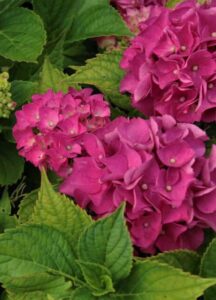 Long branches of the climbing hydrangea should be pruned back immediately after flowers start changing colors. Try not to cut as much of the plant’s top as this is where the majority of the blooms will bloom.
Long branches of the climbing hydrangea should be pruned back immediately after flowers start changing colors. Try not to cut as much of the plant’s top as this is where the majority of the blooms will bloom.
After two or three years in one location, those plants will have well-established root systems that can sustain strong development, with good foliage and blooms.
Well-established plants may withstand springtime harsh pruning, but all-at-once significant cutting back is likely will restrict flowering over the following summers.
Stagger harsh trimming over three or four years to progressively shrink the plant’s size in order to minimize flower loss.
Lacecap Hydrangea and Mophead hydrangea Pruning
Lacecap hydrangeas are characterized by the smaller blooms located in the center and a border of bigger petals on the outside. It is recommended to prune hydrangea type either at the end of the winter or at the beginning of spring.
In order to winterize the Lacecap hydrangeas, it’s better to leave the fading flowers in place during the winter to safeguard vulnerable new buds from frost damage.
With its broad, roundish heads of huge petals in colors of blue, pink, green, and white, mophead hydrangeas are a popular option for gardens.
They are therefore a popular shrub option for cottage garden styles. Just like the Lacecap hydrangea, this one has to also be trimmed in the late winter or in the beginning of spring.
Here are several tips for pruning Lacecap and Mophead hydrangeas.
- To promote new growth that will produce better blooms, remove one or two of the plant’s oldest, weakest stems near the base.
- On top of the pair of buds, gently remove any old flowerheads using secateurs. However, be careful not to remove any flower buds.
- Cut the stems down to the plant’s root system if those shrub has been neglected and has a lot of overlapping, tangled branches. However, If you do this, do not expect the new blooms next year.
Prepare Hydrangea For Next Season After Pruning
You can apply a thick layer of mulch to your hydrangea bushes to protect them from cold winter temperatures if you live in a region that experiences them.
Alternatively, if yours are in pots, bring them indoors for the winter and give them a gentle watering every few days.
When springtime arrives, wait until you are certain that the risk of frost has gone before removing the mulch or moving your container plants outside. Waiting will pay off with a more active flowering.
How to Prune Hydrangeas in Pots
Once you know what kind of hydrangea you are cultivating, trimming hydrangeas that are grown in pots is simple. Although various varieties require trimming at different periods of the year, the procedures are always the same.
Step 1: Take your sharpest pair of gardening secateurs or bypass pruner to start.
Step 2: To avoid spreading germs, fungus, mold, or any other contaminants from one plant to another, sterilize your gardening tools.
Step 3: Trim the stems while avoiding causing any harm to the rest of the plant, leaves, or root system.
In order to avoid damaging the potential flower development, trimming should generally be done before new blooms start to emerge.
Determining when to prune is dependent on the blooming phase of your hydrangea. The most common error is cutting back too late, which eliminates the bloom buds for the next year.
The act of deadheading is the removal of dead blooms from plants. With hydrangeas in pots, this is considerably simpler to perform and gives the plant a lot more well-groomed and aesthetically pleasing appearance.
However, a lot of people mistakenly believe that this is the same as trimming.
The only difference is that instead of pruning back entire stems or branches, you will merely remove the dead blooms after following the identical procedure as described before.
How do I Shape my Hydrangea?
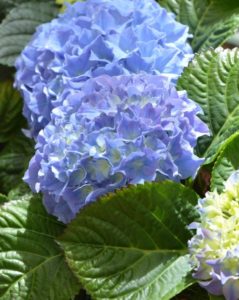 Generally, hydrangeas do not require to be pruned, however, if you just realized that your beautiful plant is getting out of shape, then you can put them in a good form by pruning.
Generally, hydrangeas do not require to be pruned, however, if you just realized that your beautiful plant is getting out of shape, then you can put them in a good form by pruning.
Shaping your hydrangeas generally means making them compact and removing the longer branches. Therefore, take some bypass pruners, and if you have any stems that are too long, remove them.
However, we recommend cutting it on the green stem and do not go down to the brown one. You may have to remove the stems that have blooms on them, and it is fine as long as there are a few of them removed.
Sometimes, having the bush in a good shape is equally aesthetically appealing as having too many blooms.
Additionally, you may want to keep your hydrangea low and not let it grow too tall. Therefore, you can cut the long stems just like we explained above.
However, make sure that you are pruning your hydrangea at the correct time, and not hurting the plant by giving the cut at the wrong time of the year.
Should I Cut off Brown Hydrangea Blooms?
If Your hydrangea bushes’ blossoms appear to be withering or turning brown, it is a signal that your beauty needs to be deadheaded, which is the removal of the blossoms.
However, not all hydrangeas like to be deadheaded. One of the species that require deadheading is Mophead hydrangeas.
For some species, it is preferable to leave the blossom heads on the plant throughout the winter to offer some frost protection.
Deadheading hydrangeas don’t cause any damage to the plants. Flowering shrubs stop generating seeds after the flowers are removed and instead focus their efforts on developing their roots and leaves.
You will be doing a good thing for your beautiful hydrangea by deadheading because this strengthens and makes plants healthier.
Many people find deadheading to be a simple and enjoyable gardening activity. To deadhead hydrangeas, all you need is a pair of gardening gloves, a pair of pruning shears, and a container to collect the fading blossoms.
Before you begin, use a towel dipped in denatured alcohol to clean the pruner blades. You’ll need to clean the pruners between cuts to prevent spreading illness throughout the bush, so keep the towel within reach.
Simply pick each wasted flower and follow its stalk down to the next set of huge leaves. that’s where you make the cut to deadhead your hydrangeas.
To help the hydrangea and promote the development of new flowers, deadhead regularly during (by the end) the flowering season.
You can leave the leftover flowers that started to bloom a little later and not cut them in the middle or late winter.
This not only adds beauty to the winter landscape but also guarantees that the buds that will bloom the following spring are not removed.
Final Thoughts
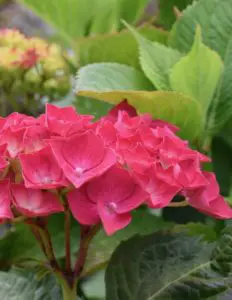 The enormous, stunning flower heads and beautiful blooms of hydrangeas stand out the most in the summer and can definitely make your garden aesthetically beautiful.
The enormous, stunning flower heads and beautiful blooms of hydrangeas stand out the most in the summer and can definitely make your garden aesthetically beautiful.
You can achieve the finest floral display from hydrangea bushes by knowing when and how to trim them. Because there is no one technique that works for all hydrangea varieties, this may appear perplexing.
Hydrangeas must be trimmed with clean and disinfected gardening tools, this will result in a clean incision that will be less likely to become infected.
The type of hydrangea you have and, to some extent, its health will determine how you should prune hydrangea. You might want to alter your pruning strategy if you discover that it is not producing healthy plants or beautiful flowers.
Determine if your plant blossoms from old or new growth by keeping an eye on it throughout the spring and summer.

